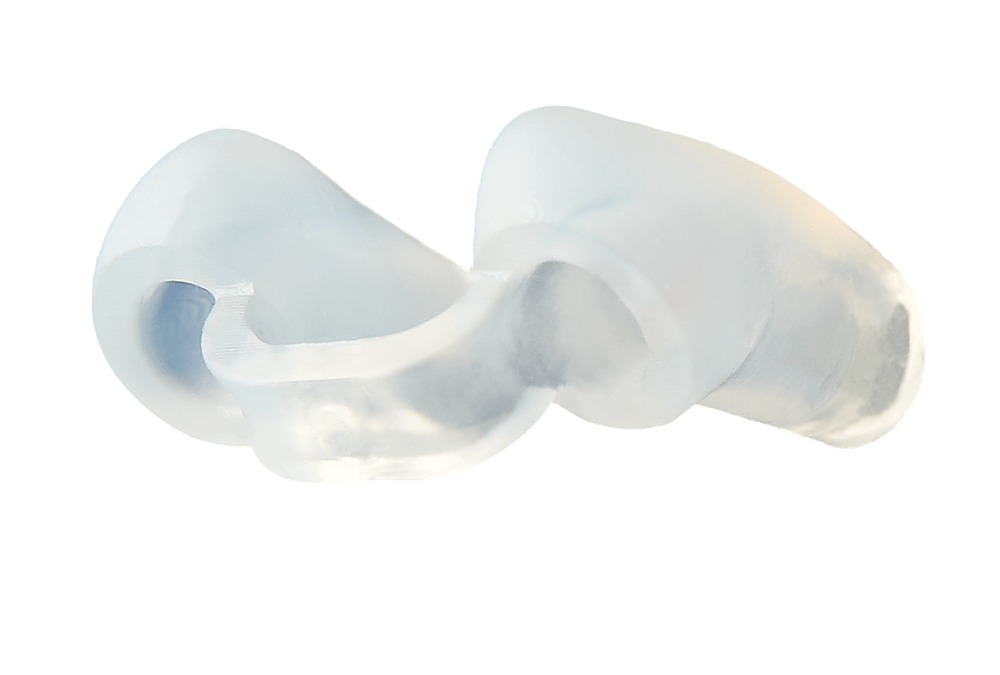Nasal retainers are used to lift the nose tip and center the nose of cleft lip patients. People who used them before, just know that they work. Scientific articles confirm that nasal retainers have a long term effect on shaping the nose tip and nostrils, while improving its symmetry.
Let’s have a quick look at the outcome of some scientific studies:
- Nasal retainers improve the nasal shape and symmetry.
A study in “Plastic and Reconstructive Surgery”[i] shows that patients who used a nasal retainer had a better nasal shape and symmetry. When a cleft lip is repaired, typically when the infant is about 3 months of age, it becomes difficult to correct the nasal deformity without surgical intervention. However, based on our experience, there is a fair possibility of correcting the cleft lip nasal deformity with a nonsurgical procedure in the early neonatal period. We performed cleft lip repair accompanied by nonsurgical correction of the nasal deformity in 44 neonates aged 2 to 7 days. A special retainer was placed in the affected nostril for 3 months. Following observation of 31 infants for 12 months or longer, their nasal shapes and symmetry were considered superior to those conventionally operated on at about 3 months of age.
- Nasal retainers make a real difference to lift the nose tip forward.
One three-year study[ii] with 26 patients showed that implementation of a preoperative nasal retainer (prior to primary lip repair) provided significant advantages for achieving columellar elongation. It is a simple, reasonable option for correcting nostril shape, preventing deformities, and guiding development of facial structures. The ratio of columella length to nasal tip protrusion significantly increased after the implementation of a preoperative nasal retainer compared to the control group.
- Long term effects: the daily use of a nasal retainer has long term effects.
Another study[iii] examined the long term effects of the use of a nasal retainer. Data from two groups of 30 patients with complete unilateral cleft lips each were retrospectively collected and analysed. The first group served as a control (no nasal splints), and the second group used the nasal retainer compliantly for at least 6 months postoperatively. All patients had their primary lip repair at 3 months of age. A photographic evaluation of the results when the patients were between 5 and 8 years of age was conducted.
The parameters used to assess the nasal outcome were nostril symmetry, alar cartilage slump, alar base level, and columella tilt. It was found that the mean scores of residual nasal deformity for all four parameters in patients who used the nasal stent were statistically better than the scores of patients who did not (p values ranged from 0.0001 to 0.005). The overall appearance scores for the four parameters in the patients who used the nasal stent after surgery were also statistically better than the scores for those who did not (p values ranged from 0.0001 to 0.01).
The results (after eight years) showed that postoperative nasal splinting in the primary management of the unilateral cleft nasal deformity serves to preserve and maintain the corrected position of the nose after primary lip and nasal correction, resulting in a significantly improved aesthetic result. Therefore, the study says, it is recommended that all patients undergoing primary correction of complete unilateral cleft deformity use the nasal retainer postoperatively for a period of at least 6 months.
At Pharmacleft, we know through experience, that fixating a nostril retainer to your child’s nose is a very unpleasant and unnatural thing to do. So we really did our best to design a retainer that simply remains much better in the nose. Therefore, fixating the retainer is much less of an issue. To prove the specific effect of the Pharmacleft Nasal Retainer, we will start scientific studies soon.
Need more (scientific) info? Please ask!
[i] Matsuo, K., Hirose, T., Otagiri, T., Norose, N., & Matsuo, K. (1989). Repair of cleft lip with nonsurgical correction of nasal deformity in the early neonatal period. Plastic and Reconstructive Surgery, 83(1), 25–31.
[ii] Kim, Y. C., Jeong, W. S., Oh, T. S., Choi, J. W., & Koh, K. S. (2017). Effect of preoperative nasal retainer on nasal growth in patients with bilateral incomplete cleft lip: A 3-year follow-up study. Archives of Plastic Surgery, 44(5), 400–406.
[iii] Yeow, V. K. L., Chen, P. K. T., Chen, Y. R., & Noordhoff, S. M. (1999). The use of nasal splints in the primary management of unilateral cleft nasal deformity. Plastic and Reconstructive Surgery, 103(5), 1347–1354.

